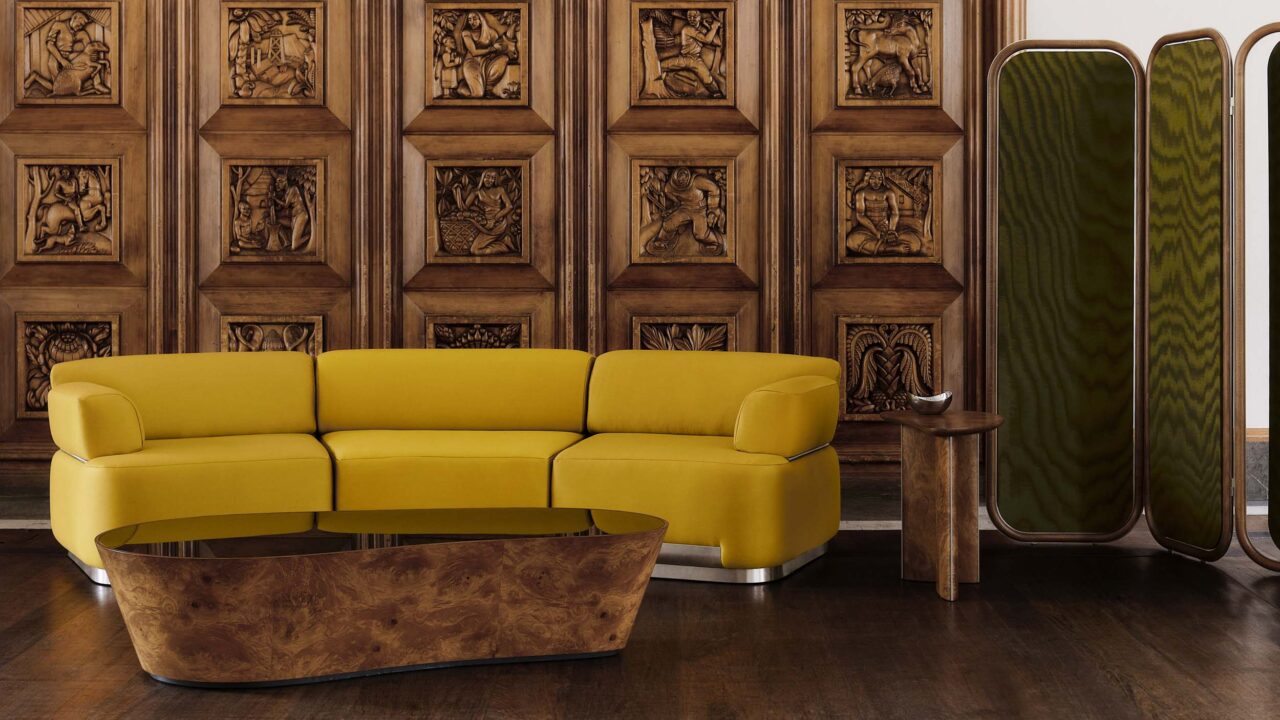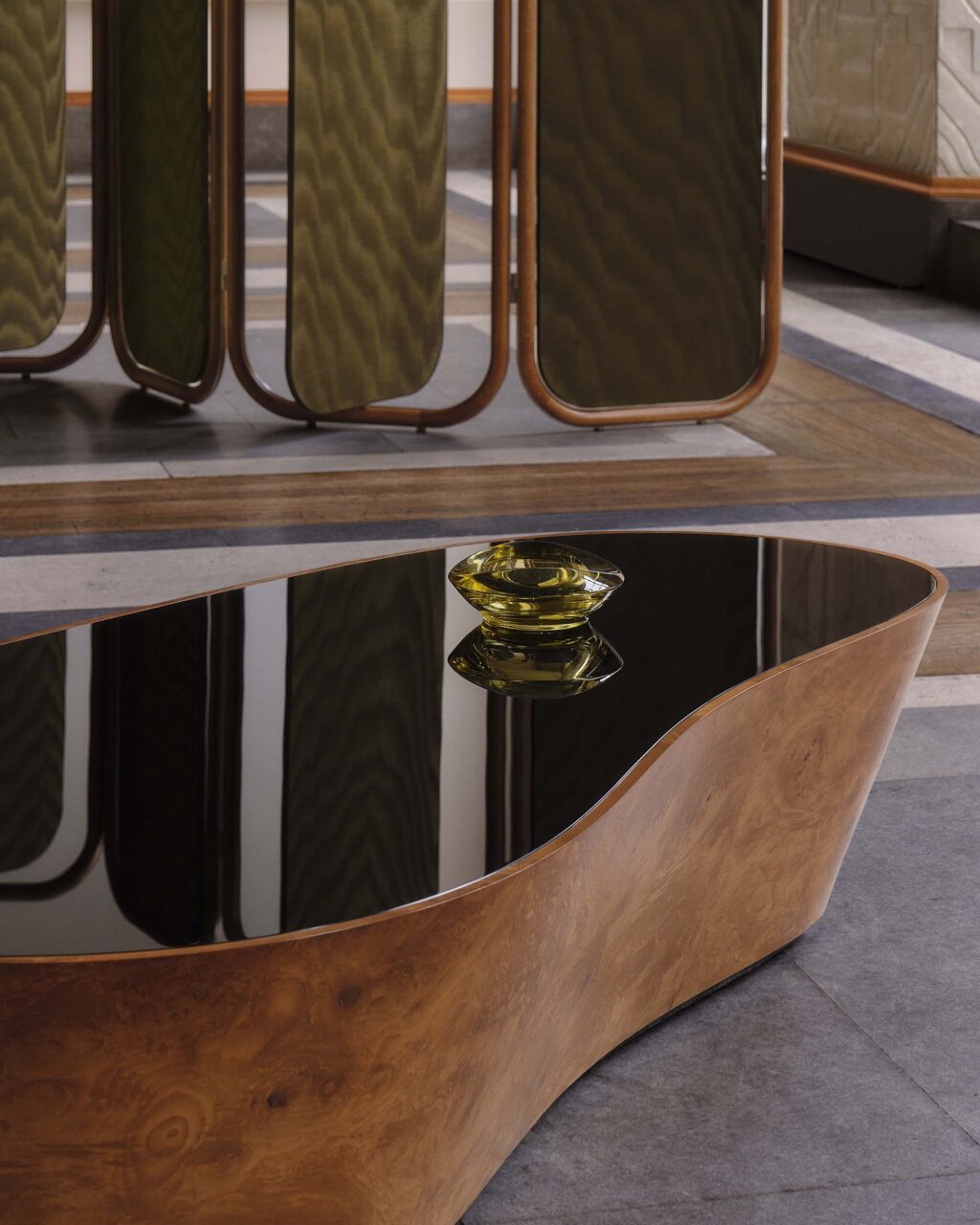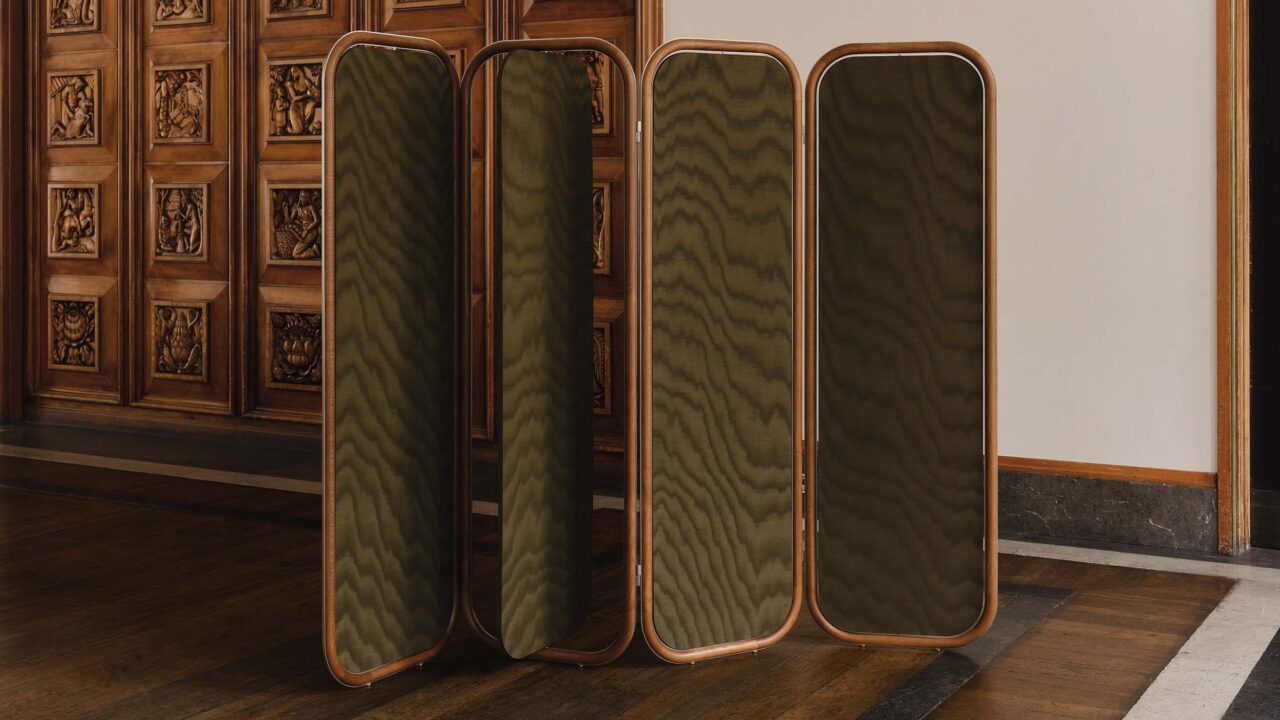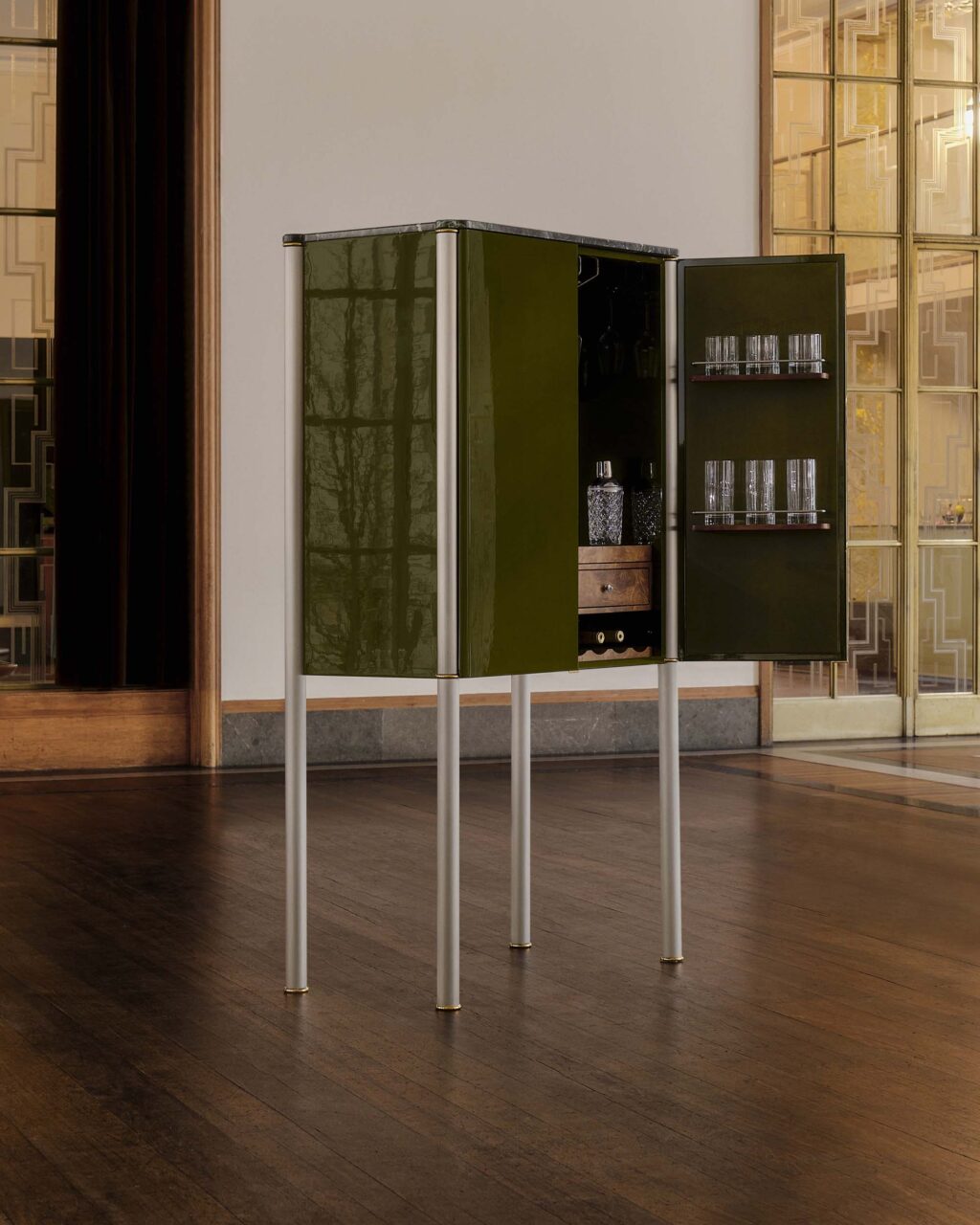Since founding interior architecture and design studio Sella Concept in 2016, Tatjana von Stein has garnered considerable experience in furniture and product design through her firm’s hyper-tailored and intricately formal, textural, and colorful approach. Nearly a decade of practice has culminated in the production of the Mise en Scène collection, the first of many to come for von Stein’s new eponymous brand. For this debut, the London-based designer tapped into her French heritage to present eight original pieces, from seating and tables to a statement screen and bar cabinet. Each piece includes a unique juxtaposition of classic and modern materials that, as is standard of Sella Concept interiors, unites an unexpected palette into a sophisticated, harmonious whole.
In addition to the introduction of this debut collection, which appeared in the Spring/Summer issue of AN Interior, Tatjana von Stein has also opened her first showroom in London’s historic Islington district. To learn more about the brand’s bold introduction, AN Interior sat down with von Stein to discuss the inspirations, aspirations, and collaborations that will guide TvS into the future.


Sophie Aliece Hollis: This Mise en Scène collection is not only your first foray into furniture, but also the launch of your eponymous brand, Tatjana von Stein. What does this debut entail?
Tatjana von Stein: We launched the furniture collection digitally in mid-May and in mid-June we opened a showroom in North London. The space is housed within a beautiful, Grade-II listed standalone building that I just fell in love with. It’s part home for my design studio, Sella Concept, but also a destination where we can have clients and guests experience this collection and the ones to come. In addition to the debut collection, we think the space will really set the tone for the new brand.

SAH: How does Tatjana von Stein differ fundamentally from Sella Concept?
TvS: Of course the brands are sisters, but the operations of Tatjana von Stein are a new arm entirely. Having a brand in your own name is a very personal creative endeavor, different from the interior client briefs, budgets, and multiple stakeholders which you must accommodate and collaborate with in traditional design work. It has been a real shift deriving Mise en Scène from my own inspirations and I am really looking forward to developing and exploring new narratives through future Tatjana von Stein collections.


SAH: What inspired the Mise en Scène collection?
TvS: A little while ago, I visited the Noguchi exhibition at the Barbican and it highlighted the relationship between Noguchi, who we know for his sculptures, and the choreographer Martha Graham. I’ve always been very moved by dance, so it was inspiring to see the way in which these two connected across different art forms to revolutionize set design in the 1930’s. In the same vein, the Mise en Scène (which translates to “setting the stage”) collection very much nods to bodily forms and movement through the medium of furniture.
For our visual campaign, we worked to capture the collection so that it expresses that sense of mobility. The pieces were arranged in various compositions that communicated an active dialogue between them, and we even brought in dancers and enormous snakes to physically move across the furniture in videos.
SAH: How does the collection’s materiality contribute to this idea of movement?
TvS: One of the primary materials I selected was burl wood. Wood naturally shows its enormous history and burl has so much beautiful movement within it. Another, less obvious example of this is shown in the bar. The sizable cabinet is supported by thin, stainless steel legs. Considerable hidden engineering was required to support the heavy chest, so I think the movement there is communicated through the balance of the heavy and delicate elements. The bar and many of the other pieces are also covered in lacquer, which reflects movement around the room (plus I think it’s a particularly sexy material).


SAH: Although you’re based in London, the pieces are primarily manufactured in your native France. What prompted this decision?
TvS: To ensure the utmost quality and integrity of our products, we partner with a wonderful French group of artisans called Aurige. They bring together the finest craftspeople across many art forms–carpentry, masonry, marquetry, to name a few—to work on the renovations of some of the world’s most monumental buildings. Notre Dame is an example. Working with such masterful talent can really help you develop beyond what you thought was possible. We hope this collection will be the beginning of a long collaboration: With so many artforms available through the hands at Aurige, the possibilities as a designer feel endless.
